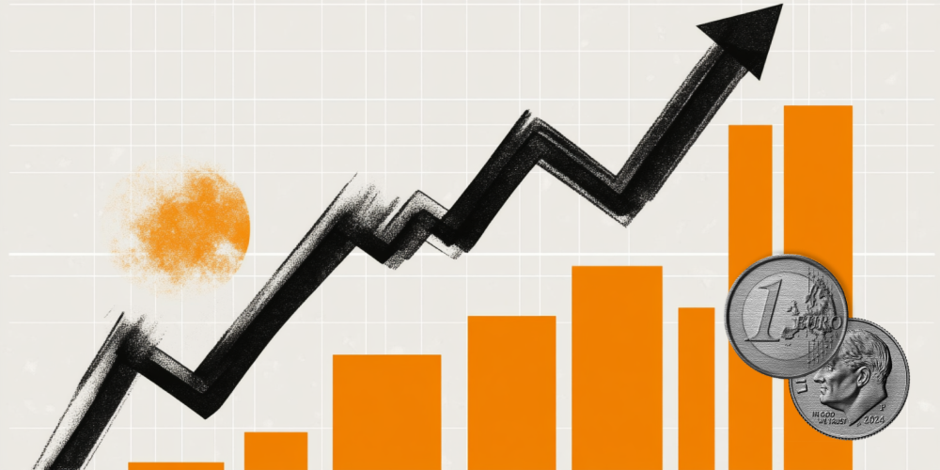Created
: 2025.10.16














![]() 2025.10.16 14:23
2025.10.16 14:23
The EUR/USD pair extends its two-day upside move to near 1.1670 during the Asian trading session on Thursday. The major currency pair trades higher as the US Dollar (USD) continues to face selling pressure amid firm Federal Reserve (Fed) dovish bets and ongoing United States (US)-China trade tensions.
During the press time, the US Dollar Index (DXY), which tracks the Greenback's value against six major currencies, trades marginally lower to near 98.50, the lowest level seen in a week.
The speculation of more interest rate cuts by the Federal Reserve (Fed) in the remaining year remains firm due to growing labor market concerns.
According to the CME FedWatch tool, traders see a 94.6% that the Fed will reduce interest rates by 50 basis points (bps) to 3.50%-3.75% in the remaining year.
On Tuesday, Fed Chair Jerome Powell also acknowledged labor market risks in a conference stating, "Downside risks to the US job market have risen". Powell didn't comment over the likely monetary policy action in the remaining year.
Meanwhile, trade relations between the US and China are going through a test as President Donald Trump has signaled that he would persuade Beijing to halt buying oil from Russia. However, trade frictions are unlikely to long last as Trump and Chinese leader XI Jinping are scheduled to meet later this month in South Korea to discuss over trade terms.
In the Eurozone, chances that French Prime Minister Sébastien Lecornu would survive the no-confidence vote by the cabinet have increased as he has suspended the controversial pension reform until at least after the 2027 presidential elections.
The US Dollar (USD) is the official currency of the United States of America, and the 'de facto' currency of a significant number of other countries where it is found in circulation alongside local notes. It is the most heavily traded currency in the world, accounting for over 88% of all global foreign exchange turnover, or an average of $6.6 trillion in transactions per day, according to data from 2022. Following the second world war, the USD took over from the British Pound as the world's reserve currency. For most of its history, the US Dollar was backed by Gold, until the Bretton Woods Agreement in 1971 when the Gold Standard went away.
The most important single factor impacting on the value of the US Dollar is monetary policy, which is shaped by the Federal Reserve (Fed). The Fed has two mandates: to achieve price stability (control inflation) and foster full employment. Its primary tool to achieve these two goals is by adjusting interest rates. When prices are rising too quickly and inflation is above the Fed's 2% target, the Fed will raise rates, which helps the USD value. When inflation falls below 2% or the Unemployment Rate is too high, the Fed may lower interest rates, which weighs on the Greenback.
In extreme situations, the Federal Reserve can also print more Dollars and enact quantitative easing (QE). QE is the process by which the Fed substantially increases the flow of credit in a stuck financial system. It is a non-standard policy measure used when credit has dried up because banks will not lend to each other (out of the fear of counterparty default). It is a last resort when simply lowering interest rates is unlikely to achieve the necessary result. It was the Fed's weapon of choice to combat the credit crunch that occurred during the Great Financial Crisis in 2008. It involves the Fed printing more Dollars and using them to buy US government bonds predominantly from financial institutions. QE usually leads to a weaker US Dollar.
Quantitative tightening (QT) is the reverse process whereby the Federal Reserve stops buying bonds from financial institutions and does not reinvest the principal from the bonds it holds maturing in new purchases. It is usually positive for the US Dollar.
![]()
Created
: 2025.10.16
![]()
Last updated
: 2025.10.16

FXStreet is a forex information website, delivering market analysis and news articles 24/7.
It features a number of articles contributed by well-known analysts, in addition to the ones by its editorial team.
Founded in 2000 by Francesc Riverola, a Spanish economist, it has grown to become a world-renowned information website.
We hope you find this article useful. Any comments or suggestions will be greatly appreciated.
We are also looking for writers with extensive experience in forex and crypto to join us.
please contact us at [email protected].
Disclaimer:
All information and content provided on this website is provided for informational purposes only and is not intended to solicit any investment. Although all efforts are made in order to ensure that the information is correct, no guarantee is provided for the accuracy of any content on this website. Any decision made shall be the responsibility of the investor and Myforex does not take any responsibility whatsoever regarding the use of any information provided herein.
The content provided on this website belongs to Myforex and, where stated, the relevant licensors. All rights are reserved by Myforex and the relevant licensors, and no content of this website, whether in full or in part, shall be copied or displayed elsewhere without the explicit written permission of the relevant copyright holder. If you wish to use any part of the content provided on this website, please ensure that you contact Myforex.
Myforex uses cookies to improve the convenience and functionality of this website. This website may include cookies not only by us but also by third parties (advertisers, log analysts, etc.) for the purpose of tracking the activities of users. Cookie policy